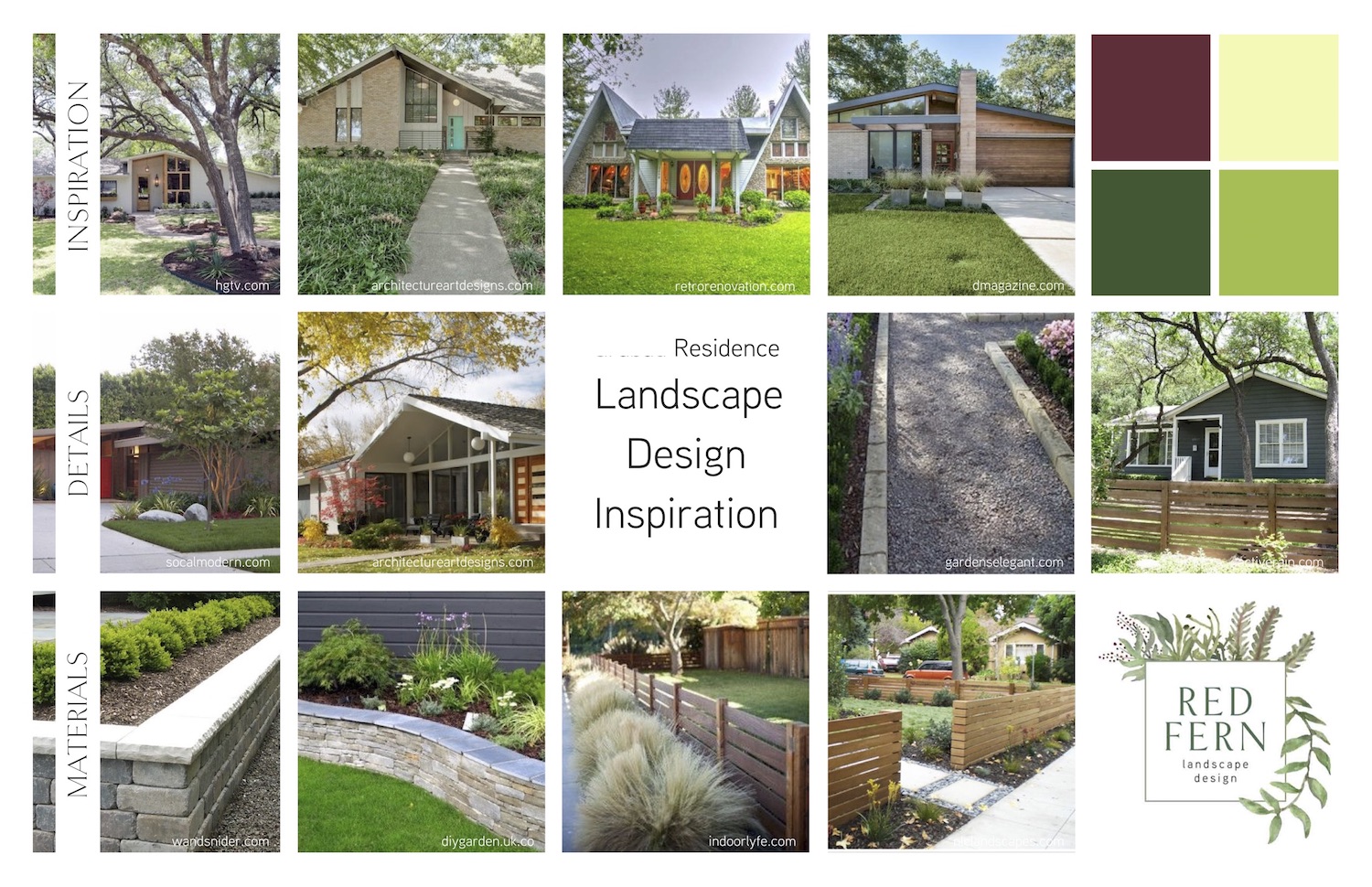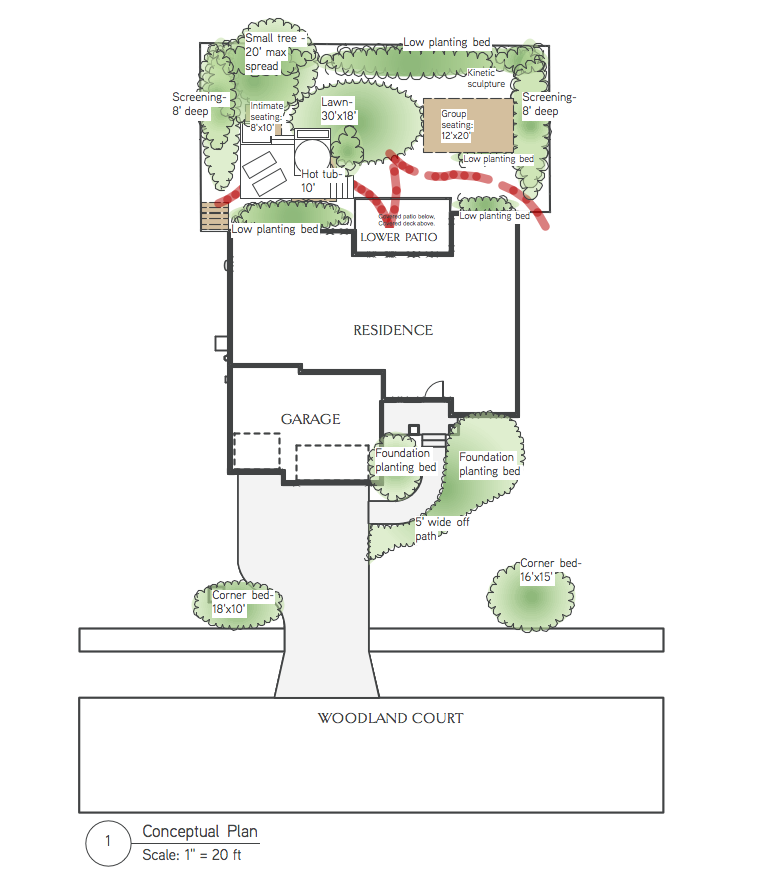Next up in our tour of the Red Fern Landscape Design signature process is Phase 2: the Conceptual Design. Once we are done with all the basic core discovery work from Phase 1 and we have the background we need to make good decisions, we move towards the design concepts for your landscaping.
In our conceptual design phase you share with me all the secret Pinterest boards you have- the fire pit you love, the big tree with a bench underneath it… All those Houzz ideabooks with pictures you’ve squirreled away. These are useful to our process- even though we won’t replicate exactly what’s there- because it gives us the ideas, the feeling, the look that you’re going for. And pictures really do speak louder than words. Going through all these helps me know what you want AND it helps you know what you want. I will look through the images you share, reference the answers you gave on our questionnaire and my notes from our initial meeting, and I’ll make sure I have a sense of the style that appeals to you.
Next, I curate images to create your inspiration board. These 12 different pictures give us something to work off- we’re not trying to copy them, but to use them as a jumping-off point to create a design unique for you.
The two boards shown above are great examples. One is very modern and clean and simple, the other is loose, romantic and wild and full of curves. The inspiration boards show us the lines and shapes and materials we’ll use. We’re going to make two very different projects from those two looks.
While the inspiration boards help, the plants are what make our outdoor spaces come alive. The plant palette helps you know what I’m talking about when I pull out plants for your landscaping. The palette shows you the core features that we’ll be taking advantage of: evergreens with a soft blue tinge, big blousy flowers during the dog days of summer. Again, these aren’t set in stone, but it gives us an idea of what we’re looking for.
We take the inspiration board and the plant palette, mix in your responses to our questionnaire, allow your design program to weigh in, and run those past the site analysis to create the conceptual plan.
It might look just like a bunch of shapes and squiggles, but actually the conceptual plan is the WHY… the big decisions are made here, and the details wait until Phase 3. Your landscaping is an important investment, and we don’t just quickly drop some things in the ground. In the conceptual design phase, we know the basic shapes and layouts of beds, we know what’s going where and how it’s all connecting to each other. When we meet, we’re still talking in broad strokes, but because we have inspiration boards, plant palettes, and the conceptual plan, we can get on the same page without wasting any time and get ready to hone in deeper to the master plan.






LIke it
pin it
tweet it
email it